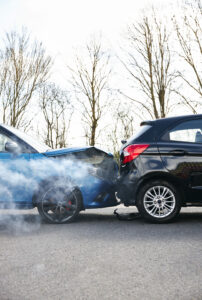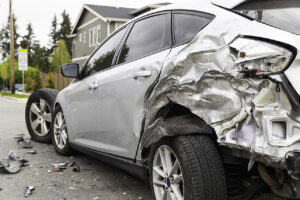Getting into a car crash can change your life in a matter of seconds. Physical injuries, excruciating pain, emotional trauma, and financial distress can be devastating to car accident victims and their families. The only thing that makes the accident worse is if the victim knows it was completely avoidable.
Tailgating is a form of aggressive driving that is completely unnecessary and extremely dangerous. Unfortunately, tailgating is common behavior among drivers in Washington, DC. Fourteen out of every 10,000 drivers have at least one citation for tailgating. Tailgating is both extremely dangerous and simply annoying to other drivers.
If you or your loved one were injured by a tailgating driver, then you may have the right to compensation. Reach out to a Regan Zambri Long Washington, DC car accident lawyer today. You will have a free consultation with a seasoned personal injury lawyer who will guide you through the claims process and help you recover the compensation you deserve.

Some reasons negligent drivers tailgate other drivers on the road are:
Distracted driving is one of the top causes of motor vehicle accidents, injuring over 400,000 people in 2019 alone. Distracted driving is when a driver’s focus is on anything other than the road. Texting, talking on the phone, messing with the radio, eating, putting on makeup, and talking to other passengers can all be forms of distracted driving. When a driver is distracted, it’s easy to close in on the driver ahead without knowing it. If the car in front stops suddenly, a tailgating collision is likely to happen.
Drowsy driving is a very common problem, especially when it comes to commercial truck drivers. Drowsy driving happens when the person operating the car is tired. Thoughts can drift, eyes can get heavy, and the driver can fall asleep at the wheel. If the driver is too tired, they may not notice they are tailgating the car in front of them. If they fall asleep at the wheel, a tailgating accident can easily happen.
When people drive in heavy rain or snow, it is really hard to see the car directly in front of them. This is why it is so important to drive cautiously and slowly in inclement weather. If you are going under the speed limit, especially on a highway, your hazards should be turned on. In poor weather, the driver may not see that the car in front is too close and unknowingly tailgate. However, if the car should stop, especially in ice or rain, an accident is likely to occur.
If you have been driving for any amount of time, you have encountered road rage. It’s alarming behavior and it is extremely dangerous. Many tailgating accidents are caused by road rage. Road rage triggers can be cutting off another driver, driving in the left-hand lane, problems when trying to merge lanes, and unnecessary honking and aggressive driving. Many drivers who have road rage will tailgate to prove a point, easily causing rear-end collisions.
Everyone is aware of the dangers of driving under the influence of drugs and alcohol. Reaction times are slowed and judgment and reason are impaired. Add tailgating to this, and it is a recipe for disaster. While tailgating is dangerous for any driver, one who is drunk or high will not have the mental capacity to stop their vehicle in time if the other driver stops suddenly.

Many rear-end collisions are caused by drivers who tailgate. Because of this, injuries from rear-end collisions can be catastrophic for backseat passengers. Some common injuries are:
Whiplash is a serious neck injury that happens when a person’s neck is subject to forceful, rapid back-and-forth movement. Whiplash is frequently dismissed as a minor injury, but that could not be further from the truth. Victims can have chronic pain and discomfort for years and have to spend thousands of dollars on physical therapy, chiropractic care, acupuncture, and pain management medication.
Traumatic brain injuries can include concussions, brain bleeds, deep bruising on the brain, and severe TBI. Symptoms range from loss of consciousness to coma or permanent vegetative state. Following an accident, there may be few signs of a TBI. That is why it is so important to seek medical attention right away after a tailgating car accident.
A spinal cord injury is damage to the spine or the nerves surrounding it. Victims may suffer partial or complete paralysis. In some cases, the movement and feeling may come back, but in others, the victim is left with little to no range of motion at all. In the first year after suffering paralysis from a spinal cord injury, a victim can rack up over $1 million in medical expenses and lifestyle changes.
Many different bones can break or fracture in a car accident. Deployed airbags can break facial bones. Leg, ankle, and foot bones can break by hitting the dashboard or door. In the backseat, passengers can suffer broken arms, backs, ribs, and more. Severe breaks may require surgery and possibly never heal properly.
Internal bleeding is bleeding that occurs within your body. Often, bleeding can be caused by a damaged or ruptured organ as a result of trauma. Like traumatic brain injuries, internal bleeding and organ damage may not display outward symptoms right away. However, if they are left untreated, they can be fatal. It is in your best interest to seek medical care immediately after a tailgating accident.
Other injuries from a tailgating accident may include:
Not all personal injury law firms can take on large insurance companies. Many smaller firms in the DC Metro Area refer their clients to Regan Zambri Long when a case becomes too big. When you work with a Regan Zambri Long injury lawyer, you are working with a national trial lawyer. That means if your case goes to court, you will have an experienced legal team behind you who will be with you until the end.
There are several steps you can follow to ensure your safety following a crash, but also to help yourself with your personal injury case. Following a tailgating accident, you should:
At the Regan Zambri Long, we make it our mission for our clients to understand every step of the personal injury case they are involved in. For you to understand the claims process, you must first understand how your attorney will determine liability for the tailgating accident.
The first thing to keep in mind is that the at-fault driver is not always the one who rear-ended the car in front of them. It may actually be the fault of the driver who was hit. The driver who was hit from behind could be found liable for the accident if he or she:
The Regan Zambri Long personal injury attorneys have seen defense lawyers quickly use contributory negligence to get their clients out of paying fair compensation. We will not allow that to happen to you. Your Regan Zambri Long accident lawyer will investigate the scene of the accident, use security footage, photos, and eyewitnesses to prove you, in no way, caused the motor vehicle accident you were involved in.